
ULTIMATE EQ PLUGIN WITH SUPERB DYNAMIC PROCESSING AND VINTAGE MODELS
Kirchhoff-EQ
Kirchhoff-EQ is an ultimate 32-band parametric EQ plugin built for all critical professional applications. It has refined sound quality, analogue-matched curves, 11 filter types with continuously variable shape and 30 vintage EQ types modelled from realworld devices. The builtin dynamic processing functions are highly flexible and have ultra-low distorsion. All these push Kirchhoff-EQ to a next-generation standard.
Equalizers will never be the same again.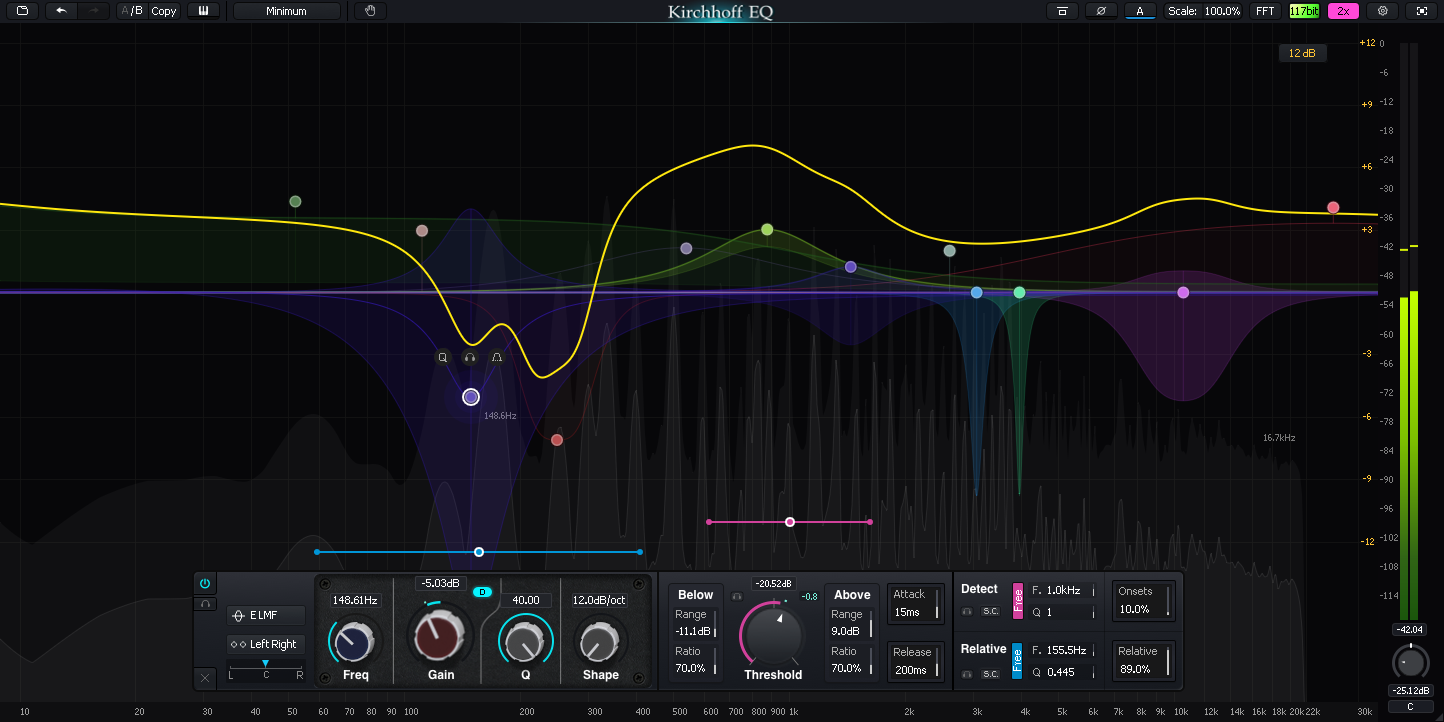
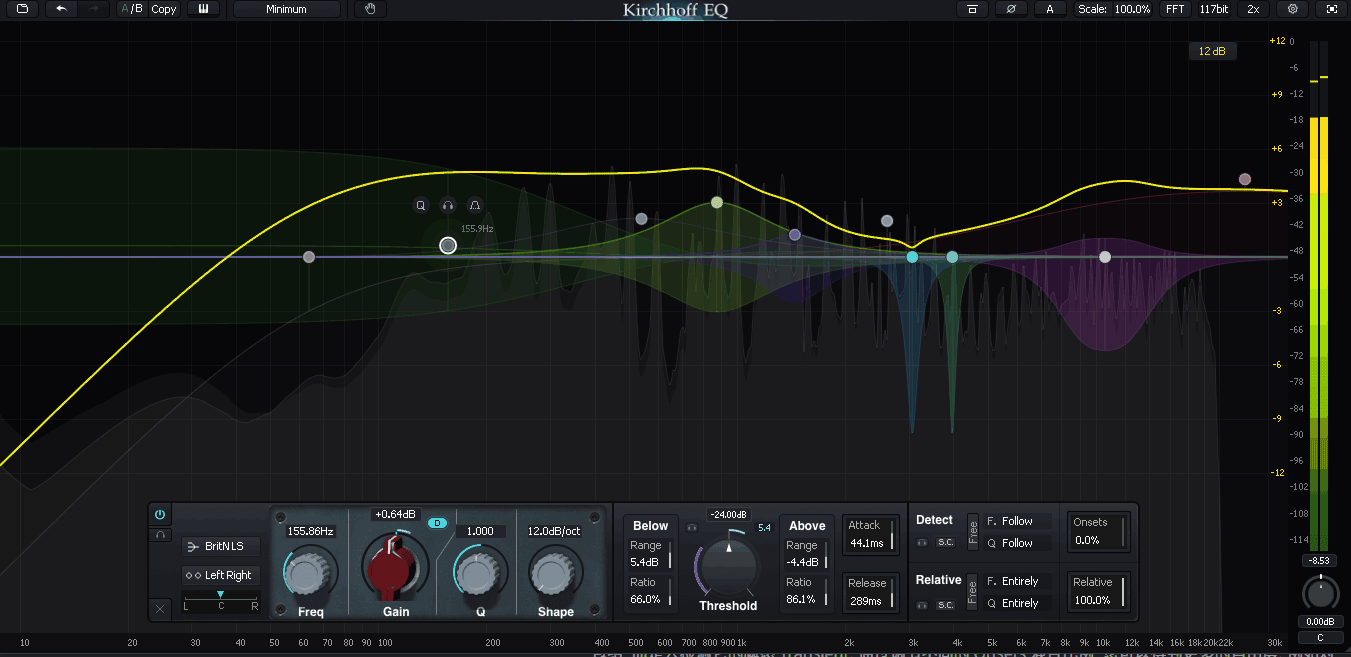
Ultimate Sound Quality
Robust Nyquist-matched Transform
Through originally developed “Robust Nyquist-matched Transform”, Kirchhoff-EQ has made digital-domain frequency response more approximate to its analogue counterparts without high frequency cramping as in regular IIR(infinite impulse response) equalizers. This technique is applied on all filter types in Kirchhoff-EQ.
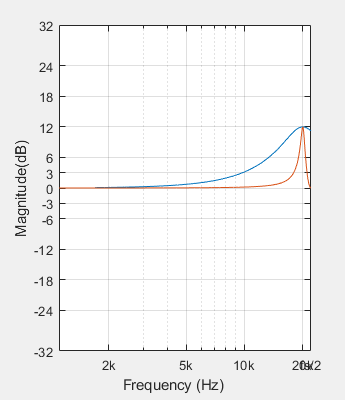
Frequency response of analogue prototype (blue) and common digital filters (red).
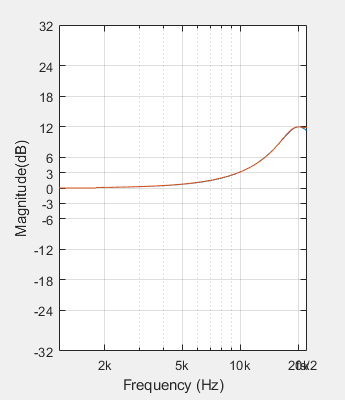
Frequency response of analogue prototype (blue) and Kirchhoff-EQ (red).
High-Precision Processing
64-bits is mandatory and it’s not negotiable. The internal processing of Kirchhoff-EQ is always in 64-bits (or 117-bits), regardless host DAW’s current working precision.
Psychoacoustic Adaptive Filter Topologies
All linear filter structures should have same sound on paper. However in real-world application, round-off errors make every filter structure sound differently: some better in low frequency, some better in high frequency.
A technology called “Psychoacoustic Adaptive Filter Topologies” has been deployed in Kirchhoff-EQ. Filter structures change themselves to a “best fitting” state along with corresponding band frequency changes, making optimized sound quality in both low and high frequency.
Click here to know more about how Psychoacoustic Adaptive Filter Topologies works.
Quantization noise of raising 6 dB at 1000 Hz of a very famous EQ.
Quantization noise of raising 6 dB at 1000 Hz of Kirchhoff-EQ.
Switchable Ultra-High 117-bits Processing
Since there’s already 64-bits, why not go further? Kirchhoff-EQ uses a technique called “Double-Double” to make precision of internal processing reach 117 bits! This is the first equalizer in the world to reach such precision. You can switch between 64-bits and 117-bits at any time. It satisfies the most demanding ears.
* Linear-phase mode always use 64-bits as it is an FIR(finite impulse response) filter, and does not support 117-bits.
Filter Types
11 Unique Filter Types
- low pass, high pass, band pass: continuously variable from 0 dB/oct to 96 dB/oct;
- bell, notch: continuously variable from 12 dB/oct to 96 dB/oct;
- low shelf, high shelf, tilt shelf: continuously variable from 6 dB/oct to 96 dB/oct;
- flat tilt and flat top;
- sword: has sharper slope than bell, specifically designed to “dig” out resonances.

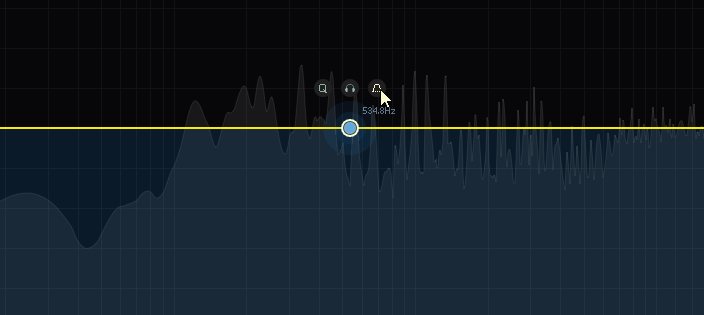
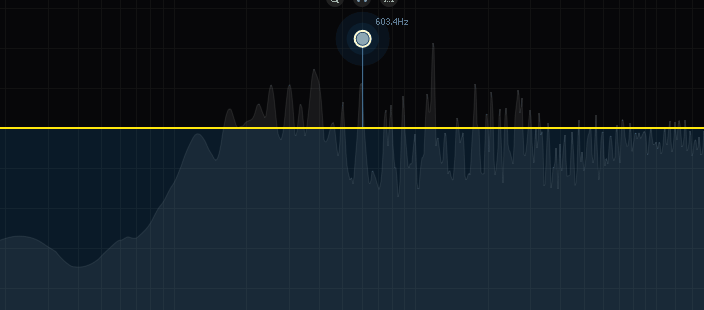
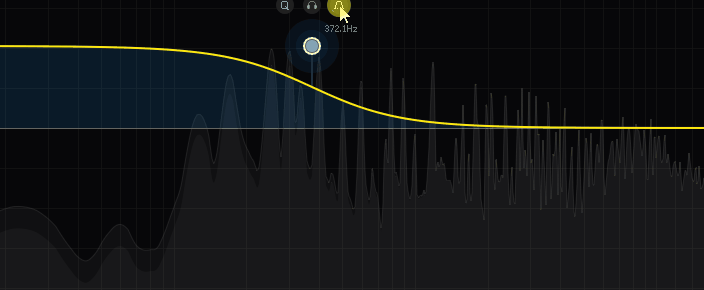
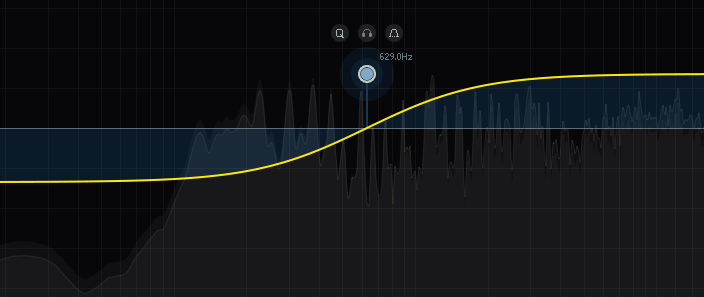
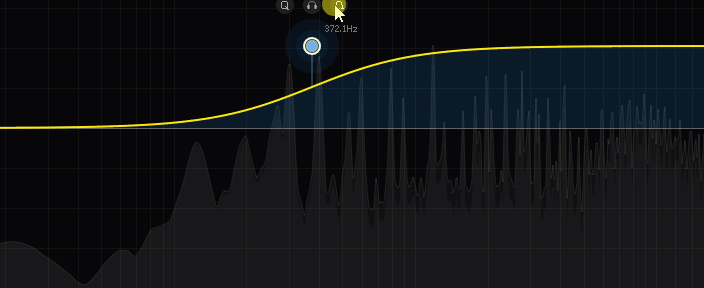

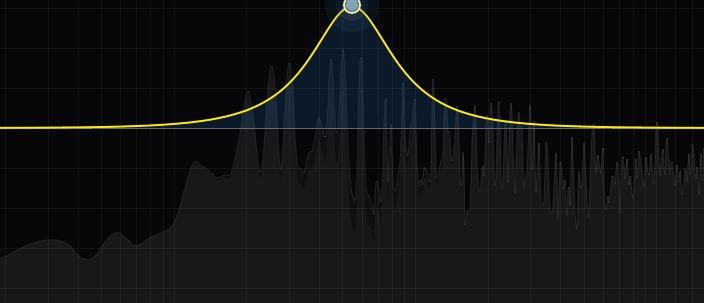
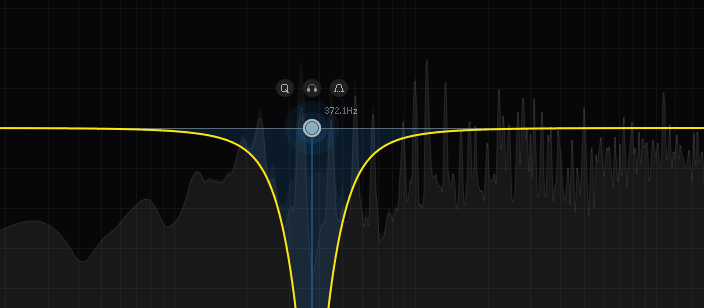

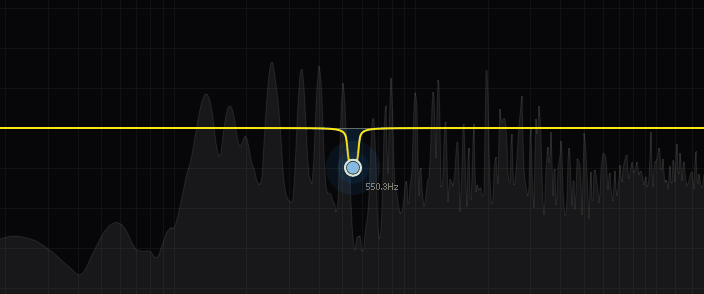
Continuously variable slopes Filters
The slope of most filter types can be continuously changed from 0 dB/oct, 6 dB/oct or 12 dB/oct up to 96 dB/oct. Would you like to try a 8.125 dB/oct highpass?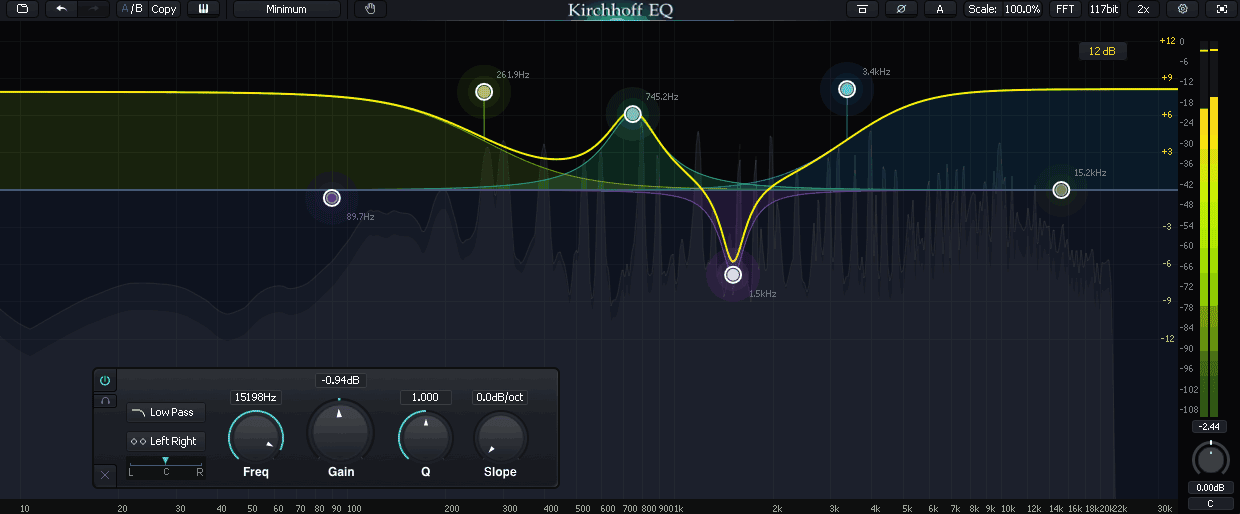
30 Filter Types Modeled from Historic Vintage EQs!
Get vintage and modern at same time! We modeled 8 vintage EQ hardware units into Kirchhoff-EQ, in total of 30 EQ types. Benefit from Robust Nyquist-Matched Transform, every EQ type precisely matches the original hardware and won’t cramp near Nyquist frequency. For a further step, unlike the original hardware that only allows to choose between several frequency positions, we modified the DSP model to make adjustable frequency points for all these types! Every type in these models can be used together with regular EQ types or other modeled types, and can be applied with dynamic functions (except lowpass and highpass types). This brings you more freedom and convenient operations.
* No non-linear behaviors were modeled. All vintage filter types only contain ideal linear parts of their physical model.
click here to know how circuit modeling works in Kirchhoff-EQ.






Zero-Latency/Analogue/Linear/Mixed Phase Modes
The phase mode of Kirchhoff-EQ is switchable between zero-latency mode, analogue mode, linear phase mode and mixed phase mode. To meet all your Phase relationship needs.
* No matter which phase mode currently in, if dynamic functions is turned on for a filter band, it will work on minimum-phase mode (won’t affect other bands).
Mixed Phase Mode
The zero-latency and linear phase mode has very different sound. Kirchhoff-EQ provides a mixed mode that uses zero-latency when band frequency point is low, and uses linear phase when it is high. Each band could smoothly changed between minimum and linear phase mode according to their frequency.
* There is no noticeable crossover between filter types while in mixed phase mode, transition is seamless.
Phase response tends to be linear as frequency increases.
Flexible Dynamic EQ Functions
Dynamic functions in Kirchhoff-EQ are not just a bonus, They provide the richest functions you have ever seen. Enabling you to achieve unlimited possibilities of dynamic EQ functions. All filter types (except low/high pass, band pass and notch), even these vintage-modelled ones, can be applied with dynamic functions.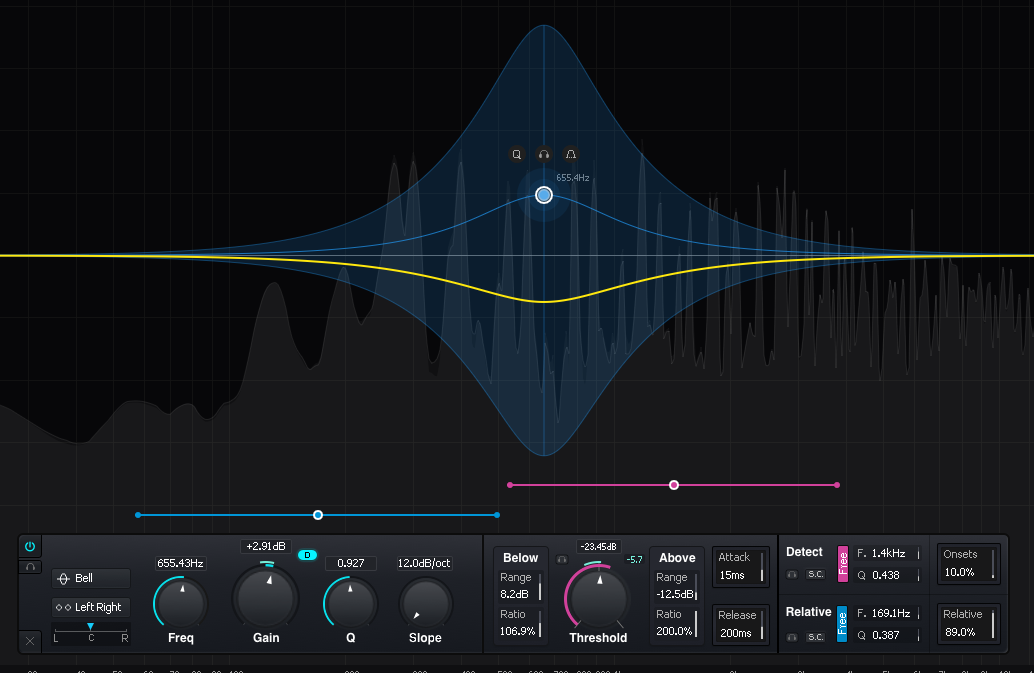
Harmonic Shifted Envelope
All dynamic EQ have odd- and non-integral harmonics, that’s the laws of physics. By using advanced DSP techniques, Kirchhoff-EQ now “shift” most energy of odd-harmonics into even-harmonics, making an ultra-low noise floor and enhanced sound. Now you can use dynamic functions with freedom without worrying about smashing your sounds.
Click here to know more about how Harmonic Shifted Envelope Detection works.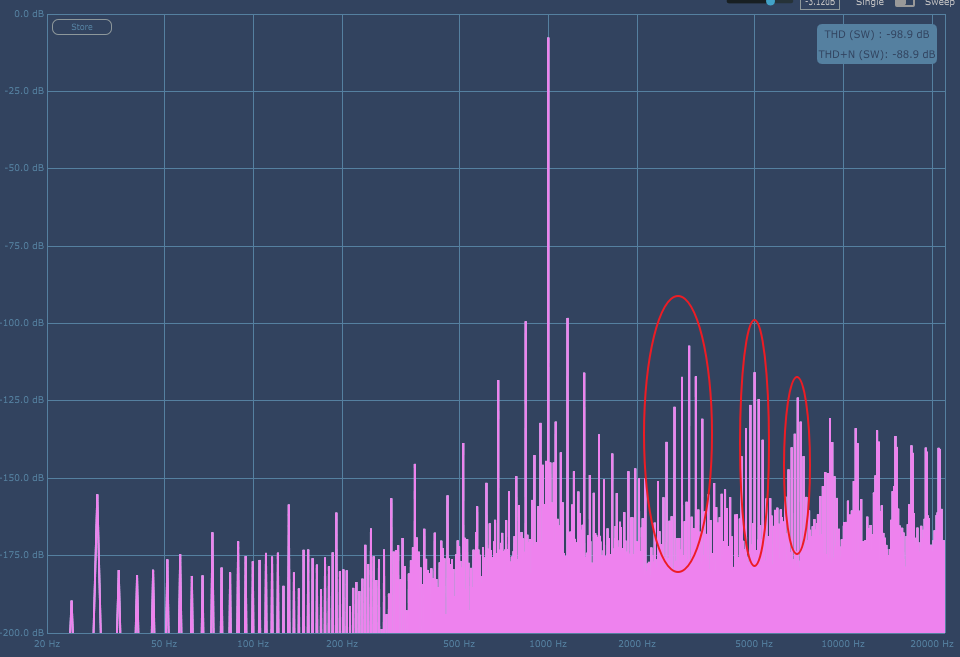
Frequency response of a very famous dynamic EQ working at 1000 Hz. Note the rich odd-time harmonics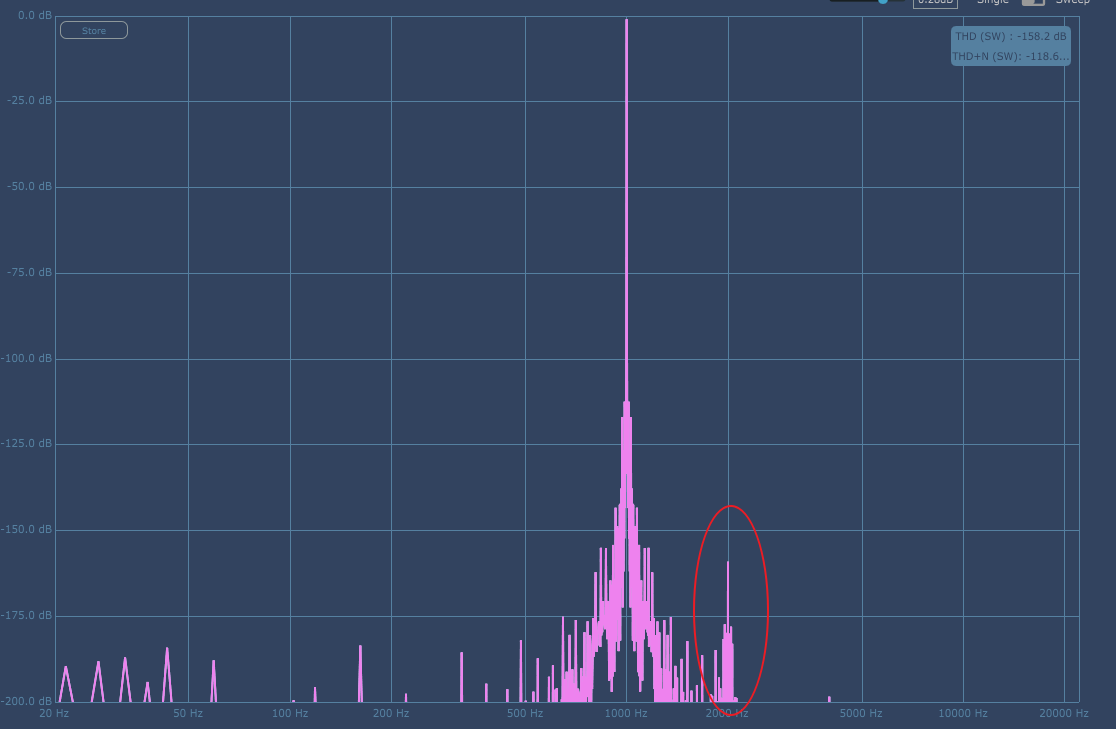
Dynamic function of Kirchhoff-EQ. Note that overall harmonic distortion is decreased whilst new even-time harmonics are generated.
Two-Way Threshold
You can now control how dynamics react to the portion of signal above/below threshold concurrently. In Kirchhoff-EQ, the “Above” stage works as a compressor or upward-expander, and the “Below” stage works as an expander or upward-compressor. For example, you can raise the signal below the threshold AND compress the signal above the threshold to “stabilize” a band.

Detect/Relative Envelope Detection
Let us imagine a simple case: we are playing an audio clip in which sounds around 1khz are 9 dB. You may think “The 1khz range is over powering, We should reduce the 1khz But we should also consider the overall level. If the whole audio is 30 dB, you would not feel that 1khz is too much, instead you may feel it’s not enough. The better criteria to determine whether a band’s volume is high or low is its relative portion in overall volume envelope, instead of only its absolute dB value.
Thereby we introduce “Detect/Relative Envelope Detection” in Kirchhoff-EQ. The dynamics are affected by both current frequency band and relative portion to a “Relative” band. The contribution of Relative Envelope Detection to dynamics is also adjustable: when set to 0%, it degrades as a normal dynamic EQ; and when set to 100%, the amount of dynamics is fully calculated from the relative portion.
The “detect” band is set according to the frequency and Q of the band by default, “Relative” is the whole audio envelope by default. But they can be set freely.
The detecting band and relative band have a freely adjustable frequency point and Q value. Or enable “S.C.” mode to make “Detect” or “Relative” to a sidechain signal.
Onsets Detection Mix
By turning on “Onsets” mix, the envelope detector reacts more specifically to transients inside of the envelope. So you can fine-tune the tone of transients. For better adjustability, you can “mix” envelope detector and onsets detector. For example, you can compress the high frequencies just a little bit whilst compressing the suddent increase of high frequencies more aggressively.
More Details
Spectrum Grab
Kirchhoff-EQ allows you to locate a specific frequency peak rapidly by directly grabbing on spectrum.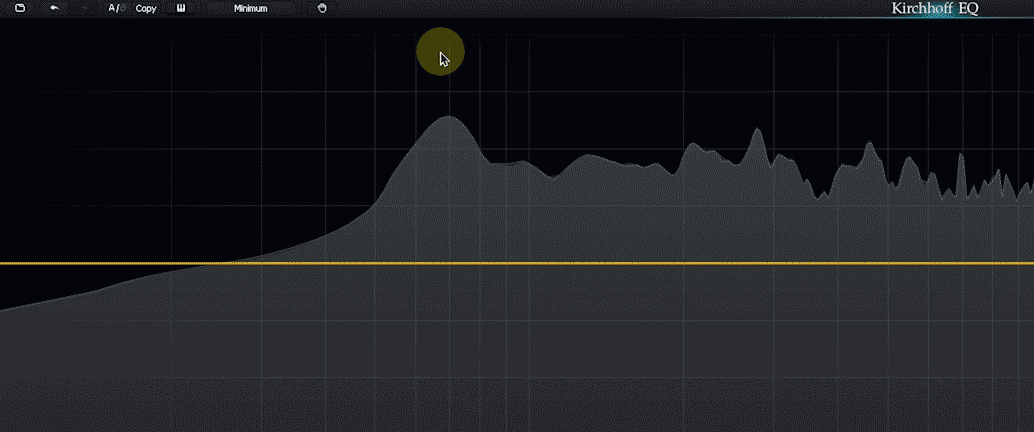
Switchable 2x Oversampling
Kirchhoff-EQ has builtin 2x oversampling that can be freely turned on/off.
Per-Band Directional EQ
Each band can be set as mid/side or left/right processing, so you can pan a band Left or right, or adjust Mid/Side, or just left, right, mid and side separately.
Extreme CPU Optimization
Through hand-written assembly code commands, Kirchhoff-EQ achieves ultra low CPU workload. Never fear to use hundreds of instances!
Low Clicking Noise
We made our best to reduce clicking noises while performing parameter changes, type switching, bypass on/off and enter/leave solo listening mode.
GPU Accelerated GUI
We are dedicated to smoothness in oprerating, speed to open/close UI and operation latency. To achieve better rendering efficiency, the GUI of Kirchhoff-EQ is rendered using OpenGL.
Visual-Comfort Spectrometer
The spectrum panel of Kirchhoff-EQ is carefully optimized for visuals and is freely configurable. You can adjust its decibel range, refresh speed, resolution, frequency scaling and brightness. You can even directly specify its center frequency.
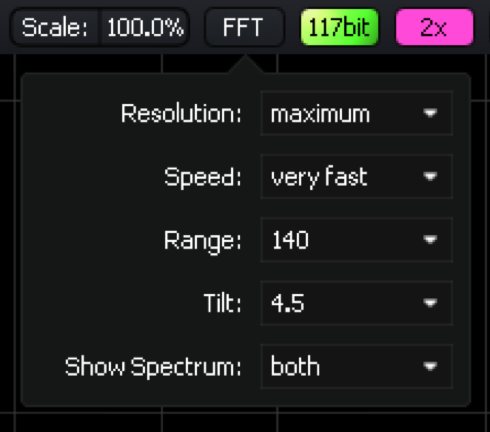
User-Customizable Settings
How to trigger a war on forum? Ask them if a Q value shall increse/decrease when mouse wheels up. To help speed-up your workflow, Kirchhoff-EQ provides a rich set of options allowing you to cast it to your own handy tool.
Other Features:
- solo mode
- phase invert
- automatic gain compensation
- gain scale
- adjustable spectrum center
- resizable interface
- full-screen mode
- MacOS Retina and Windows high-DPI support
- piano roll display
- pre-EQ/post-EQ/both spectrum
- multi-band selection
- multiple display ranges: 3dB, 6dB, 12dB, 18dB, 30dB
- output level meter
- presets and user-defined defaults
- undo/redo and A/B switching
- VST2, VST3, Audio Units, AAX Native (64-bit)
Latency
- Minimum-Phase: 0.
- Analog Phase: 63 sample points, about 1.4ms (44100Hz sample rate).
- Mix Phase: 63-2047 sample points, depends on band frequency point.
- Linear Phase: 2047, 4095, 8191, 16383, 32767 sample points.
Minimum System Requirements:
Intel or AMD CPU with SSE 4.1 instruction set.
M1 support via Rosetta translation
Mac OS X 10.9 / Windows 7.
4GB RAM and 100MB disk space.
Plugin Formats Provided
64-bit VST2,VST3,AAX,Audio Unit
Extra Requirements on Specific Hosts:
Logic Pro X or Higher (Logic 9 is not supported)
